The fight against airborne troops in World War II
Airborne troops on a massive scale were used on the battlefields of the Second World War. They were used in all theaters of war, both in small groups and large formations with a variety of purposes: from sabotage to independent solution of operational and strategic tasks. An important role was assigned to the airborne troops in Hitler’s plans for a “blitzkrieg” war. They acted during the seizure of Poland in 1939, Norway, Belgium, Holland in 1940, and on the island of Crete in 1941.
On the Eastern Front, the German command landed small parachute paratroopers and reconnaissance and sabotage groups to disorganize control, logistics, capture bridges, airfields and other tasks. In particular, already on the first day of the war, parachutists were found in the areas of Kovel, Dubno, Radekhov, Stryya, Chernovitsy in the South-Western Front. In the favorable environment created by our victories on the Eastern Front, a number of airborne operations were conducted by the Allied forces in Europe. The largest of them were: Sicilian (1943 g.), Normandy, Arnhem (1944 g.), Rhine (1945 g.). During the war years, over 150 airborne assault forces were landed, of which around 10 were of operational and strategic importance.
The improvement of the airborne troops and the increase in their use demanded from the war the warring parties find effective methods to combat them. It should be emphasized that the European countries — the first victims of German aggression — turned out to be practically unprepared for the solution of this task. The reason for this is the skepticism of Western military experts to the possibility of widespread use of paratroopers at the level of development of air defense systems achieved by that time, as well as the high operational density of troops in Europe.
By the beginning of World War II, the Red Army had developed a harmonious system of views on this problem, refined with the accumulation of experience in military operations in the West. She suggested: the establishment of zones of responsibility for the destruction of the landed troops and the allocation of forces and necessary funds for this purpose; reconnaissance, surveillance and warning; organization of protection and defense of the most important facilities; the construction of various barriers and other activities. It was envisaged to engage in combat Aviation, parts of the Red Army and the NKVD troops, armed guards of objects that could be attacked, and, finally, the local population.
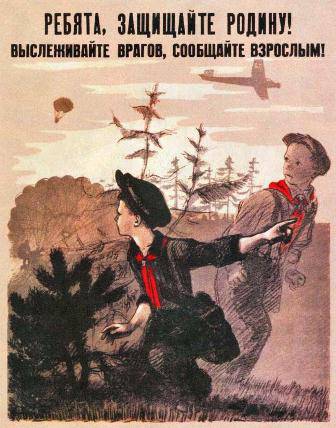
The zones of responsibility of the formations and formations for the destruction of the disembarked (discarded) enemy groups usually were within the designated defense zones, and in depth included: for divisions, regimental rear areas to the second lane; for the corps - areas of the military rear to the army zone. In the army zone and directly behind it, the fight against enemy airborne assault forces was carried out by means of the army, and further in depth - by front-line ones.
The units and subdivisions that were part of the reserve, as a rule, were assigned a combat mission to combat paratroopers in a particular area. In accordance with it, it was required to distribute and locate forces and means. The entrusted region was divided into sectors, and the latter - into sections. For each of them answered his boss. The size of the sectors and sections, their location and the composition of the forces and means allocated for each of them were established depending on the task, the importance of the objects in the area, the number and size of the possible landing sites and the nature of the terrain. In all cases, it was recommended to allocate a sufficiently strong maneuverable reserve and locate it in the central part of the site and in the depth of the sector, ready for action in any direction.
Serious attention was paid to the organization of communication between sectors, areas and within the latter, as well as anti-aircraft facilities located here. The experience of the war in the West showed that the army without the help of the population is unable to detect and destroy small landing forces and reconnaissance and sabotage groups of enemy troops in places where there were no military garrisons or police officers. That is why, from the first days of the war, the local population was also attracted to combat airborne assault forces in the frontline zone. Of his number, by August 1941 more than 1750 fighter battalions had been formed, which included more than 328000 people. In total, about 400 000 people passed through the war for them. Also over 300000 people were in fighter battalion assistance groups. The task of the latter was to monitor and quickly alert the closest military units, destructive battalions or police agencies about enemy aircraft and parachutists.
Thanks to the measures taken, the use of landings by German troops on our front did not give the effect that the German command was counting on, and was not so widespread.
The experience of the war revealed the importance of timely opening up preparations for an enemy airborne operation, determining the timing of its commencement, establishing initial areas and landings of the enemy, his strength and means, possible nature of actions and targets of attack, and immediately alerting his troops about the impending threat. The tasks of detecting the enemy in the source areas for landing were usually solved in the course of general enemy reconnaissance activities. It should be noted that the preparation for the conduct of large-scale VDO, most often, it was possible to open in advance. For example, this was the case during the invasion of the German troops in Holland and Belgium and on. Crete. Aerial and undercover intelligence of the Germans had long before the start of the landing of the British and Americans in Normandy warned of the likelihood of their use of large airborne assault forces.
Intelligence was particularly important. Without reliable data on the composition, landing sites and intentions of the enemy, it was impossible to make the right decision to destroy it. The implementation of this task was often difficult due to the dispersal of parachutists over a large area, the release of small demonstrative groups, parachutist dummies and other misrepresentation measures. World War II is rich in examples of this kind. In particular, the command of the Dutch army in May 1940, after the landing of numerous German groups, most of which turned out to be small and purely demonstrative, failed to fully understand the situation and did not act in the best way.
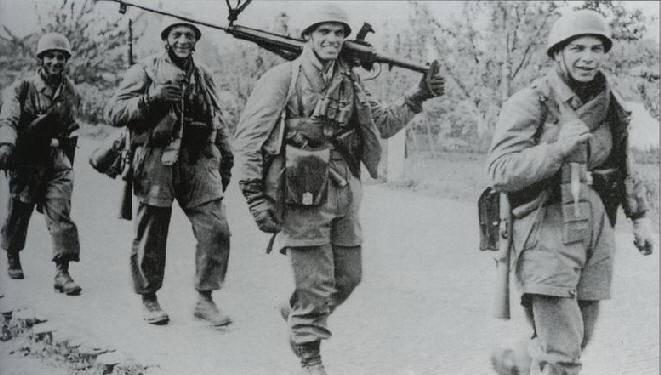
In the Norman landing operation, American and British paratroopers scattered over large areas. In addition, the Allies in some places threw mannequins and applied metallized tape. The disoriented German command was unable to correctly assess the actual situation and delayed the deployment of its operational reserves against the diseased enemy for 18-20 hours.
In our country, reconnaissance of assault forces was entrusted to the network of fixed posts of air surveillance, warning and communication (VNOS), observation posts. The latter were deployed not only in the troops, but also on collective and state farms, at railway stations, industrial enterprises and other places. In the zones of responsibility of the defending troops, tracking of the most dangerous areas was organized by mobile patrols. In the rear areas, these works were carried out by patrols from the local population. Their use as part of mobile and fixed observation posts made it possible to significantly reduce outfits from the troops and save their forces for the destruction of airborne assault forces. In urban areas, the probable landing sites of the enemy were established by the combined efforts of the troops, the police, destructive battalions, armed guards of important objects and civilian organizations. To notify the enemy’s outburst (disembarkation), the military communications system, VNOS posts, the local telephone network, mobile equipment and visual signals were used.
The war demanded the organization of reliable protection and defense of rear facilities, at the capture of which the airborne assault forces aimed. Defense was usually created circular. Subunits and fire weapons were previously assigned lanes (sectors) of firing, determined the order of firing and warning signals. Trenches for personnel, positions for fire weapons, mine and wire obstacles are the minimum that was considered necessary for the organization of the defense of the object. Given time, the scale of construction expanded. On the ground, especially suitable for disembarkation, stakes were hammered, fences were set, piles of stones and other materials were poured. Special antiamphibious obstacles were erected. They were pillars up to 30 cm in diameter and length from 2-x to 3,5 m long, buried in the ground at a distance 20-30 m from each other. These poles were entangled with barbed wire and connected with artillery shells and mines installed to explode.
The defense was built on the basis of repelling attacks, both those landed directly on the object itself or in the vicinity of it, as well as those that could appear at a substantial distance. It was created, first of all, at the expense of the regular personnel of the facilities, which was being prepared for the fulfillment of the task in accordance with the combat schedule. For the defense of the most important of them stood out and combat units.
Direct protection of objects from the air was carried out by the existing anti-aircraft weapons and personal fire infantry weapons. Anti-aircraft guns were installed in such a way as to hit planes, gliders and paratroopers over the object to be covered and near it, as well as to ensure the possibility of using them for firing at ground targets.
Particular attention was paid to the protection of airfields, the capture of which by parachutists, with the subsequent landing of large forces on them, was the basis of the tactics of the Hitler airborne troops. Where the defense of airfields was reliable, the actions of the enemy were usually accompanied by heavy losses. For example, in the Netherlands, in the face of the threat of a German invasion, the defense of airfields in the region of The Hague was significantly enhanced. As a result, the first echelon of the Nazi airborne assault force, dropped by parachute to capture the airfields of Valkenburg, Eupenburg and Ockenburg, was almost completely destroyed.
British troops in the organization of defense of. Crete also did a lot to strengthen the defense of the airfields. Defensive positions were equipped around the latter, which allowed them to control their territory with fire. And here the first attack of the German paratroopers 20 in May 1941 ended in failure.
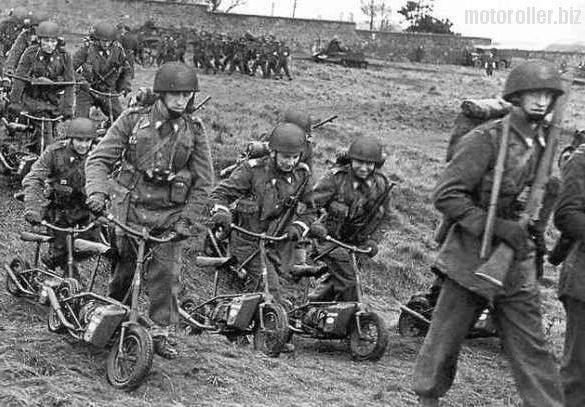
In Normandy, German troops took under the protection of all the most important objects. Houses and buildings, near which could land planes and gliders, adapted to the conduct of all-round defense, increased anti-aircraft cover of these areas. The dominant heights were equipped with trenches for fire weapons, trenches and shelters. However, by the summer of 1944, the engineering plan for the coast of Seneca Bay was completed only by 18%.
Theoretical views of the times of war included the bombing of airborne assault forces in the initial areas for landing and their defeat in flight by fighter aircraft and antiaircraft artillery. It is worth noting that the war did not give examples of more or less successful actions of this kind. The main reason was that virtually all of the major airborne troops were carried out with an obvious dominance in the air of the attacking side, which obviously doomed the defenders to passive actions. In such an environment, individual attempts to strike at the enemy in the source areas for landing did not bring the desired results. The British, for example, in May 1941, several times bombed the airfields of military transport aviation and the German troops in the places of concentration (in southern Greece), prepared for the invasion on about. Crete. Since the initial areas of the Nazis were outside the range of the British fighters (120-140 km), the bombardment was carried out without accompanying them by small groups of aircraft and only at night. Naturally, these strikes were not effective enough, and could not prevent the beginning of the airborne operation.
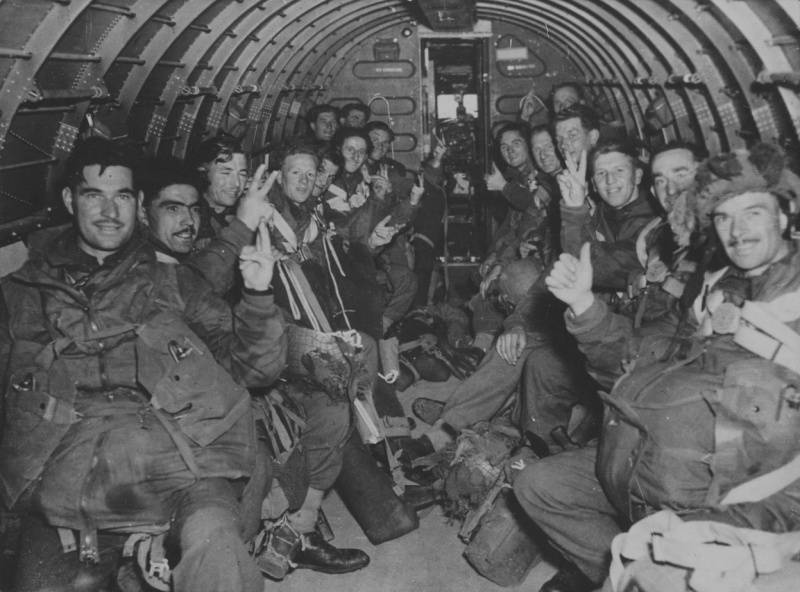
During the flight, the landed forces were safely covered by aircraft. For example, in the Allied Rhine Airborne Operation in March, 1945, 889 fighters accompanied airplanes and gliders with troops in the air. In addition, the 1253 fighter cleared the airspace above the landing area, and the 900 fighter-bombers suppressed targets on the ground. It should be noted that in this operation, German anti-aircraft weapons had a significant opposition to the landing, which, despite the massive bombardment by Anglo-American aircraft, was not suppressed. From their fire, the Allies lost 53 aircraft and 37 gliders; 440 airplanes and 300 gliders were damaged.
The limited possibilities of airborne assault in the initial areas for landing and in flight, led to the fact that the main fight against them was transferred to the drop-off areas (landing). Advance preparation of artillery fire in such areas justified itself, but its careful coordination with the actions of other forces and means was required. In the 1944 year, for example, German troops, in anticipation of the Allied landings in Normandy, prepared artillery fire on all suitable sites. However, at the time of the paratroopers dropping out at these sites and next to them, their own patrols appeared, so the gunners could not fire, and most of them were captured without having fired a single shot.
The paramount role in the fight against the landed airborne assault forces was the presence of combat-ready forces to solve this problem and the speed of their deployment. Combat experience has shown that the attack is even by minor forces, especially tanks, with the support of artillery, carried out during the deployment, collection and putting on alert the landing units, can lead to the defeat of numerically superior forces. So, the 1st British Airborne Division, landed September 17-18, 1944 west of Arnhem, was almost immediately attacked by units of the German tank corps located nearby at the reformation. For eight days she fought surrounded by heavy battles, lost up to 7600 people, and on the night of September 26th she retreated behind the Lower Rhine without fulfilling the task. Conversely, a delay in starting action against paratroopers has always helped them. It was procrastination that became one of the reasons for the defeat of the British troops in the struggle for Fr. Crete, which, in anticipation of the Nazi landing from the sea, missed the right time for a decisive attack against the airborne assault. This moment arose at the end of the first day of fighting (May 20, 1941), when the paratroopers, having suffered heavy losses (in some battalions they reached 60% of their total number), were unable to capture a single airfield to receive a landing landing.
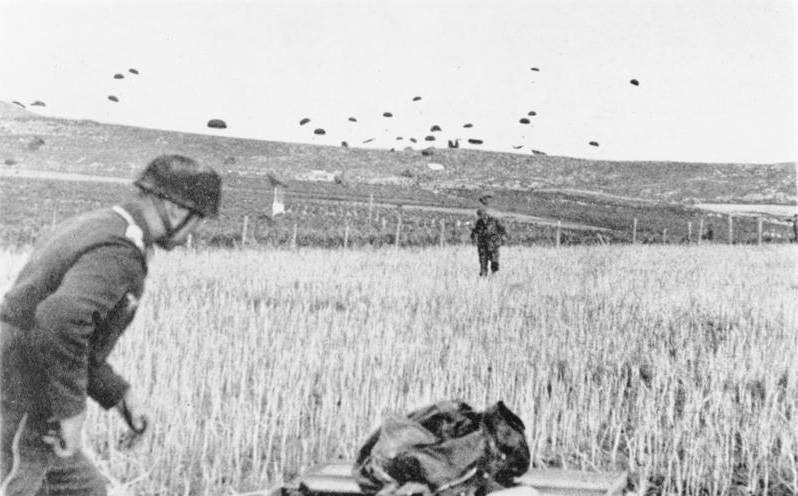
It is also extremely important in the fight against the diseased enemy to do minimal forces, not to give the upcoming opportunity to draw into the sphere of hostilities all available reserves and thereby achieve the goals. Characteristic are the unsuccessful actions of the command of the Dutch army in May 1940. Emitted on a wide front and in large numbers, German parachute detachments of varying numbers pinned down the main forces of the 1 Army Corps in reserve. In the general confusion, fearing the release of significant reinforcements, the Dutch command removed a number of units from the front, thereby facilitating the advance of the advancing German forces.
In Normandy, in the area of the landing of airborne troops of the Americans and the British, the German command did not have sufficient forces. They were focused on the coast of the Pas-de-Calais. On the vast stretch of the coast of the Seine Bay, where the Allied invasion was carried out, only three German divisions defended, two of which did not have vehicles. The presence of such insignificant and weak forces in combat capability, besides being extremely stretched along the front, made it difficult to maneuver reserves and put the Germans in a difficult position.
The conditions for maneuvering operational reserves located in the Paris area proved to be extremely difficult. Allied aviation destroyed or disabled all bridges across the Seine, between Rouen and the country's capital, and damaged a significant number of railway junctions and other facilities. Simultaneously, sabotage on the railways and the resistance fighters intensified. As a result, by the beginning of the operation, the landing area was isolated from the rest of France.
On the night of the invasion, the German headquarters, guided by the information received, sent troops to the points where the landing party was landed. Due to the large scatter of paratroopers, some small battles took place over a wide area. The commanders of the German units lost the ability to manage their units, which everywhere had to act independently. The paratroopers shackled German troops defending the coast, destroyed bridges, broke down control, detained the reserves approach, and thus contributed to landing from the sea. During the war, various methods were used to destroy the airborne assault forces that had landed. They were determined depending on the specific situation, first of all, the nature and amount of information about the enemy (its composition, combat capabilities, actions), the presence and readiness of its troops, terrain conditions and other factors.
In the case of a circular defense zone, the paratroopers attacked them by striking from one or several directions. The attack from one direction was carried out when there was no complete information about the enemy and the terrain, and, moreover, in those cases if the available forces did not give an opportunity to use a different course of action. Its advantages are the speed and ease of maneuver, the possibility of concentrating the maximum amount of forces and resources in the selected area, the complexity of management. Its main disadvantage is that the troops that landed could transfer reserves from quiet areas to the threatened area.
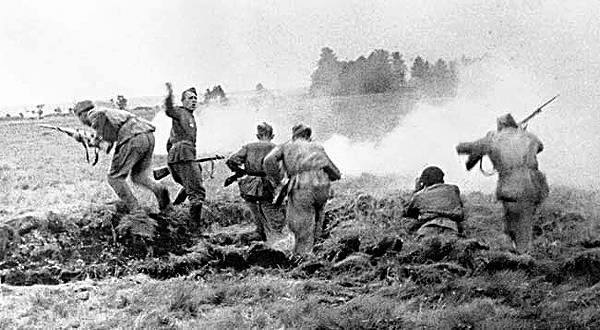
If there was enough information about the composition of the landed forces and the terrain features, and the defending troops had superiority and high mobility, the strikes were carried out from different sides in converging directions. This made it possible to dissect the airborne troops into separate parts, isolate them and destroy them separately. However, this method led to dispersal of forces, complicated their management and required more time to prepare the battle.
At the same time, when the main forces of the paratroopers after the landing began advancing towards the object of attack, their rout was carried out in a meeting battle. At the same time, frontal strikes were practiced, as well as front bindings with simultaneous strikes on one or both flanks. An attack from the front was planned in those cases when the disembarked troops attacked in a wide swathe or it was impossible to reach the flank. The onset of the main forces in a narrow sector was achieved by splitting the enemy into two groups and ensured their subsequent destruction in parts.
In conditions when the available forces could not destroy the disembarked ones, the main efforts were concentrated on covering the most important objects threatened with seizure or destruction, as well as blocking the enemy in the landing areas. So the German troops fought with the American and British airborne assault forces, because their main forces were engaged on the Eastern Front.
After the Second World War, the conditions for the use of airborne assault forces and the conduct of their struggle underwent a number of changes. First of all, fundamental qualitative changes have occurred in the technical equipment of the airborne troops, their structure, methods of combat use. The military transport aviation became different, the equipment was updated. They have developed the development of nonstop landing means that allow troops to be thrown onto unprepared sites at a high pace.
Along with military transport aircraft, helicopters were widely used to transfer forces. The new technology, in view of the sharp increase in the effectiveness of the means of destruction, has created prerequisites for a significant increase in the capabilities and depth of the use of airborne assault forces. The simultaneous impact throughout the depth of the operational construction of opposing groups not only by means of destruction, but also by troops (airborne, airmobile), has become the leading trend in the development of military art.
All this suggests that in modern operations, the task of fighting airborne assault forces is even more relevant than in the past. However, its solution continues to use the experience gained during the Second World War. Basically, in the opinion of military experts, such provisions as the territorial principle of responsibility of various command instances for organizing and conducting the fight against disembarked groups retain their significance. The importance of creating an effective system of reconnaissance and warning (including in the rear of its troops), capable of timely revealing the enemy’s preparation for airborne and airmobile operations, and promptly notifying the troops of the impending threat; organization of reliable protection and defense of rear facilities, at the capture of which the enemy is aiming; early creation of high mobility anti-amphibious reserves and keeping them in constant readiness for action; preparation of artillery fire and air strikes on possible landing areas, construction of various obstacles and obstacles there; careful coordination of actions of all forces and means, and some others.
Sources:
Gove A. Attention, parachutists! M .: AST 2003. C. 97-100, 137-141, 164-170
Gavin D. Airborne War. M .: Voenizdat 1967, S. 51-69.
Anfilov V. The failure of the "blitzkrieg". M .: Science, 1974. C. 249-251
Likhomanov R. About the fight with the air assault of the enemy. // Military Thought. 1988. No.3. C.48-56.
Bulatov A. Fighting with airborne assault forces. Visi 1984. No.8. C. 59-66.
R. Ponomarenko. Battle for Arnhem // 10-I SS Panzer Division "Frundsberg". M.: Veche. 2009. C. 67-72
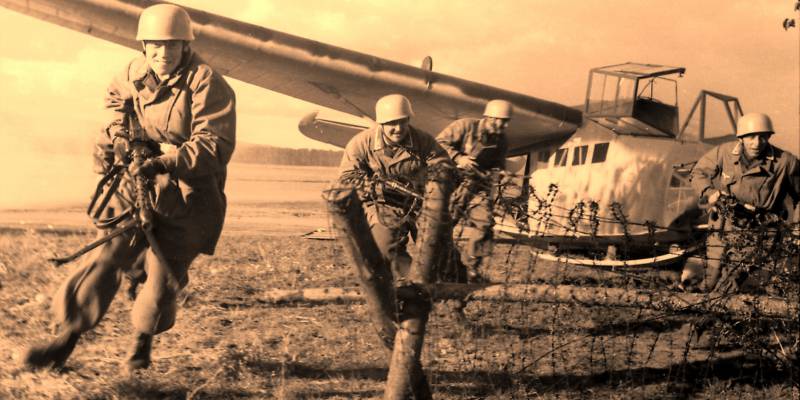
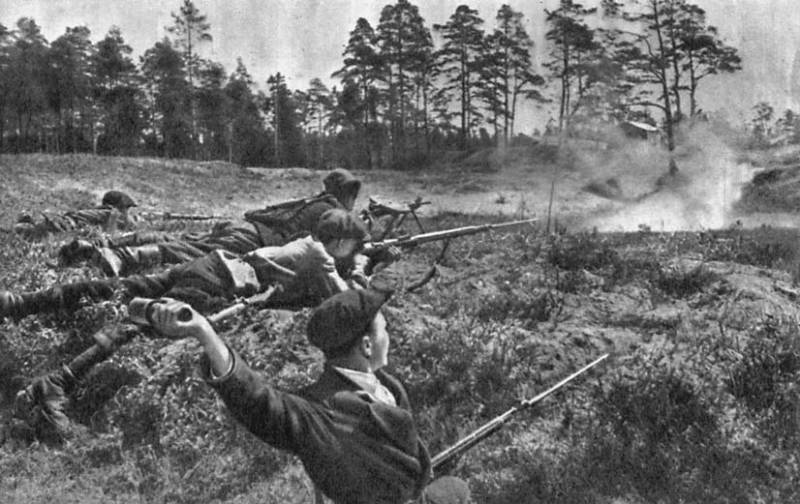
Information